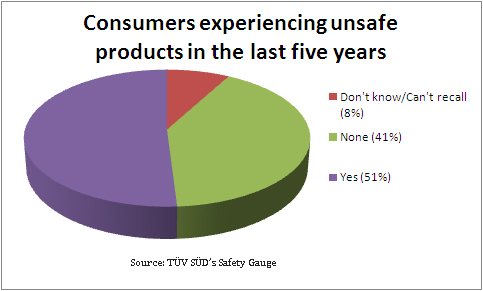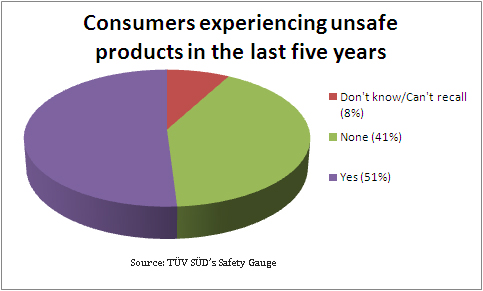
A new study from TÜV SÜD suggests product safety, not brand, is the key determinant for consumer purchase.
TÜV SÜD’s Safety Gauge investigated product safety practices and consumer attitudes and experiences across consumer goods, electronics and food sectors in five markets. It found overwhelming consumer willingness to pay premiums for products meeting the strictest safety standards, as well as evidence that safety certifications influence purchasing decisions.
Manufacturers may be in a unique position of being able to leverage consumer concern over product safety to drive commercial success through a systematic approach to product safety. President and CEO of TÜV SÜD North America Ian Nichol says, “Contrary to popular belief, significant safety improvements can be made with limited resources, by working together with suppliers for instance, and standardizing safety requirements throughout the supply chain.”
According to the report, 85 percent of those surveyed said they would be willing to pay a premium of 15 percent over standard prices for products achieving exemplary safety standards. Eight of 10 respondents said safety certifications influence preference for a familiar brand while 60 percent look for safety certification information on labels of unfamiliar products.
The food industry is widely considered the safest of all industries surveyed, but even so, almost all consumers expect further efforts to expand traceability and transparency. Of the industries surveyed in Safety Gauge, food company management ranked highest on product safety practice awareness.
Consumers ranked the food industry as safest among those surveyed, and stated hygiene is a more important criterion than brand or product origin when purchasing a food product. Price and freshness ranked number one and two, respectively, as the biggest purchasing influencers. Respondents expressed the most concern over raw meat and fish products, dairy products including milk and eggs, fruit and vegetables.
Click here to view the entire report.

